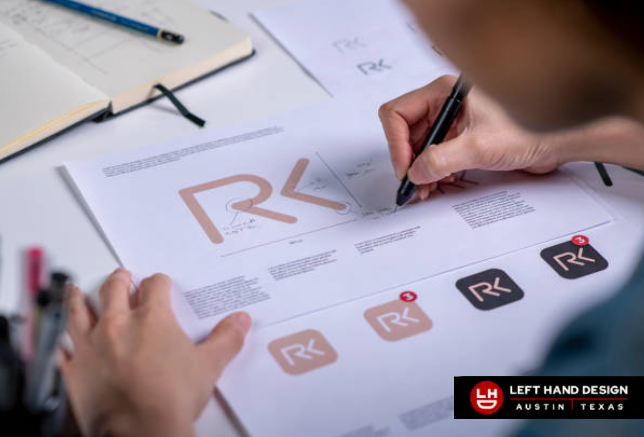Logos are more than visual marks—they’re the distilled essence of a brand’s personality, values, and aspirations. While AI tools can rapidly generate options, they lack the nuanced understanding needed to capture true style and preference. Human designers bring taste, cultural insight, and emotional sensitivity that AI cannot replicate.
Your Texas business deserves the best. Explore our professional logo design services in Austin, Houston, Dallas, and San Antonio.
What AI Can and Can’t Do in Logo Design
Where AI Helps (Ideation and Speed)
AI logo generators excel at producing large sets of initial concepts from simple prompts. By leveraging machine learning models trained on vast design libraries, tools like Looka and Wix Logo Maker can deliver dozens of mockups in minutes. This pace is useful for brainstorming and assembling preliminary moodboards.
Where AI Falls Short (Style and Preference Fit)
Most AI systems rely on template blending and trend analysis, which leads to designs that feel generic and safe. They struggle to interpret subjective terms like “bold yet approachable” or “luxurious minimalism,” often defaulting to the most statistically common shapes and color schemes. As a result, outputs can lack distinctiveness and misalign with a brand’s unique voice.
Human Strengths in Style Adaptation
Taste, Judgment, and Aesthetic Intuition
Designers cultivate an internal sense of what feels right for each brand. They balance simplicity, symbolism, and originality, making trade-offs based on context and long-term goals. A human can choose a custom letterform tweak that elevates a logo from “nice” to “memorable” by applying years of visual training and design principles.
Cultural, Contextual, and Ethical Sensitivity
Brands operate within diverse markets and histories. Designers research cultural symbols, color meanings, and visual taboos to ensure relevance and respect. They can avoid unintended misinterpretations—an area where AI often fails, since it lacks awareness of evolving social and cultural dynamics.
Originality and Trademark Considerations
AI models generate variations based on existing artwork, risking similarity to other marks. Human designers intentionally craft unique forms and check trademark databases, ensuring logos are protectable and legally sound. This custom approach prevents “lookalike” logos that dilute brand identity and invite legal challenges (USPTO, 2025).
Why Preference Gathering Requires Humans
Discovery and Dialogue
Effective logo creation starts with conversation. Through workshops and interviews, designers surface both explicit desires (“make it modern”) and unspoken needs (“feel trustworthy”). Translating descriptive words into visual elements requires empathy and active listening—something AI cannot do without real-time dialogue.
Iteration with Purpose
Designers use structured feedback rounds to refine concepts. They explain rationale for every curve, color, and type choice, ensuring stakeholders understand trade-offs. This transparent process builds confidence and avoids time wasted on misaligned AI outputs that lack clear intent.
The Risks of Relying on AI for Style Fit
Lookalike Logos and Brand Confusion
Trend-chasing AI outputs often mimic popular designs, leading to similar marks across industries. This reduces distinctiveness and makes it harder for customers to remember or differentiate your brand. Human creativity counters this by delivering truly bespoke visuals.
Accessibility and Cross-Channel Consistency Gaps
Designers test logos for contrast, readability at small sizes, and adaptability across web, print, and merchandise. AI tools might overlook legibility on signage or mobile icons—a critical oversight for global brands requiring consistent application (WebAIM, 2024).
A Smart Workflow: AI for Exploration, Humans for Excellence
Use AI to Explore, Not Finalize
Treat AI as a research assistant that delivers directions—not finished products. Generate initial references and then curate ruthlessly. Select promising leads and discard the rest before bringing human refinement into play.
Human-Led Refinement and Governance
After narrowing options, designers develop comprehensive brand guidelines, covering usage rules, color codes, and typography systems. This governance ensures future updates remain on-brand and legally compliant, something AI cannot manage autonomously.
See our logo design work and discover how we turn ideas into unforgettable brands.
Conclusion
Logos carry meaning far beyond pixels and vectors. They communicate who you are, what you value, and how you connect emotionally with your audience. AI can speed up ideation, but only human designers possess the taste, cultural insight, and originality necessary to tailor logos to real style preferences. For brands that aim to stand out and resonate deeply, investing in human creativity remains essential.
Frequently Asked Questions
1. Can AI ever match a designer’s taste for a specific brand personality?
While AI can suggest broad styles, it lacks the human ability to interpret subtle cues from stakeholder conversations and brand narratives. Designers translate those nuances into custom visuals that truly reflect a brand’s essence.
2. How do designers ensure a logo works across different cultures?
Designers research local color meanings, symbolism, and cultural norms, then adapt forms and palettes accordingly. This tailored approach prevents unintended misinterpretation in global markets.
3. Are there hybrid approaches combining AI and human design?
Yes. A popular workflow uses AI for rapid prototyping, followed by human selection, critique, and refinement. This method leverages AI’s speed while preserving design quality.
4. Do AI-generated logos pose legal risks?
AI outputs can resemble existing trademarks since models learn from public designs. Human designers conduct distinctiveness checks and trademark searches to avoid infringement.
5. What’s the best way for startups to start a logo project?
Begin with a discovery session led by a designer to define brand values and preferences. Use AI tools for inspiration, but invest in human-led refinement to ensure originality and cohesion across all brand touchpoints.
To start your logo journey with human-led excellence, visit Left Hand Design and discover how our Austin-based team can craft a logo that truly reflects your brand’s style and personality.
